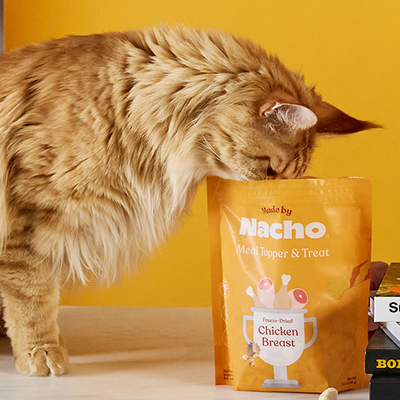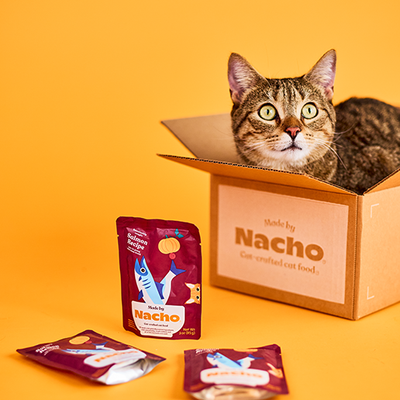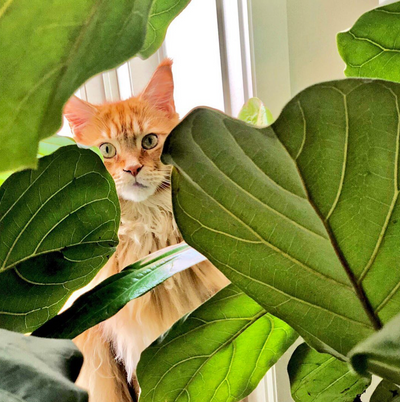Congratulations! You’ve adopted a brand-new kitten! But, before you go setting up their social media account(s), you need to make sure your space is kitten-friendly. We asked Dr. Katja Lang, Made by Nacho Veterinary Consultant, for her best advice for getting your home ready for a kitten.
Kitten proof
Kittens are naturally curious (and playful!), so you want to make sure there are no electrical cords to chew on, tight spaces they can get stuck in, loose strings or yarn they can eat, or any toxic cleaning products they might accidentally encounter.
Plants, too
Many common household plants are toxic to pets; the ASPCA has an extensive list of what plants are safe for cats and what plants you’ll want to rehome.
A little sanctuary
Isolate your new kitten in a small, private, quiet room (or space) with a litter box, water, and food bowl. Provide a few sleeping options, including a covered one, so they have a place to get away from it all. Dr. Lang notes that a scratching post or pad is also essential.
Slow intros
Dr. Lang says it’s best to wait for your kitten to make the first move when meeting family, friends, or roommates. “Make sure not to startle them by picking them up or petting them without their acceptance,” She said. Start young children off on a respectful path by teaching them to pet kittens gently on the head or along their back, avoiding the tail and belly.
Meeting other pets
“It’s best to keep your new kitten separated from your other pets for at least a week,” says Dr. Lang. “Once you settle your kitten into their quiet space, you can introduce other animals’ scent by bringing in a towel or shirt that the other pet has laid on.”
The next step is to introduce your kitten to the other pets in your home through a baby gate before letting them interact. When they seem comfortable through the baby gate, you can let them come into closer contact. Give them time to acclimate if your kitten gets stressed during the interaction (think: hissing, a high, straight tail, flattened ears, and fur standing on end).
The right food
Before bringing home baby, get your hands on complete and balanced kitten food (like Made by Nacho Kitten Kibble!) and plan on transitioning them for 7 - 10 days.
First vet visit
Schedule a vet exam at around 6 - 8 weeks to get their first kitten vaccines, which help prevent certain upper respiratory and gastrointestinal infections. In addition, your vet may recommend checking a fecal sample to look for intestinal parasites and deworming your kitten. Dr. Lang also recommends testing for feline AIDS and leukemia, which can be transmitted to kittens from the mother and other cats.
If you see any signs of illness before your appointment, like lethargy, decreased appetite, diarrhea, or upper respiratory infection, bring them to the vet as soon as you can.
Now that you’re set up for success, share your kitten pics with us on Instagram! We love to see it.
This post is intended for informational purposes only. It is not a substitute for professional veterinary advice, diagnosis, or treatment.









